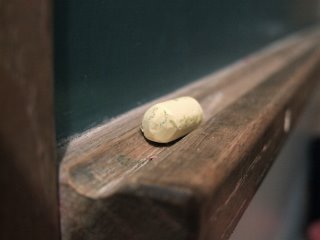Why separate art from learning?
 As long as arts organisations keep their educational strands as a bolt on to the ‘core’ or ‘main house’ programme, they will never become fully relevant and engaging to the people they are there to serve.
As long as arts organisations keep their educational strands as a bolt on to the ‘core’ or ‘main house’ programme, they will never become fully relevant and engaging to the people they are there to serve.This is the central provocation of MMM's latest paper which deals with the nature of education and the arts.
Read the full paper here, written by Sara Robinson and Teo Greenstreet.
And once you have...join the MMM debate and please leave your comments on this blog by clicking on Comments below.
(image courtesy of morguefile)

7 Comments:
This comment has been removed by a blog administrator.
This rocks. Very thought provoking. Am going to ask all our staff to read it and discuss at future staff meetings.
Your paper is very interesting and thorough. I particularly like your comment about leaving creative activity firmly in the rehearsal room. That sounds so familiar.
Through the work we are doing we are seeing that this siloing of education work is still happening in so many places. I think also there is a need for arts education practitioners to be prepared to learn from the people they work with, there is a lot of arrogance out there.
I'll watch the blog with interest.
See Arts Council England response here:
http://www.artscouncil.org.uk/artsdebate/2006/11/arts_education_the_key_to_enga_1.php
passive consumerism is the enemy
You are both, of course, quite right but a word of caution from a company that's been pioneering this approach for several years now. By uniting the 'education and outreach' work of the company with the core artistic work of the company we have had to battle hard with increasingly conformist reporting and evaluation requirements. We don't have a separate education department so completing the Arts Council's Annual Survey or application forms for funding with their clear delineation between functions like 'education' and 'marketing' is becoming almost impossible to complete in a meaningful way.
It is also a long and arduous battle to encourage peers, critics and funders to view work which includes participants as 'the real thing'. I think this is reflected in your research into attitudes at Senior Management and Trustee level. We struggle hard to define our work as mainstage when our peers and funders often prefer to see it as 'community arts' and therefore a different species. Luckily our audiences and participants do see us differently.
It's a heartwarming moment when one can contribute to a blog with a bit of bragging but here at Birmingham Opera Company we've been walking the talk in terms of education & outreach at the core of the organisation's performance work for a while now.You might like read more about the 'vision thing' in the text of the 2003 RPS Lecture that Graham Vick gave on wwwhttp://www.royalphilharmonicsociety.org.uk/?page=lectures/rpsLectures/vickLecture.html
Jean Nicholson
General Manager
Birmingham Opera Company
Art it is best appreciated when it is, not education, not engagement, not learning, not part of any kind of 'education programme' because art is all of these, art intrinsically is all of these. Separation, as educationalists will do, is fatal, leading to the death of art in anyones mind. It is only through art that one is able to come to a real experience of art. That is, it has to be experiential to be real, to have meaning, it cannot be taught.
My own experience in the 60's was in 'action space' a voluntary group of artists who left the gallery scene to work in communities, working as artsts from many different disciplines until 1978.
Our note paper was headed 'Play, Education and the Arts'. Weren't too sure about education but we found that play became the major force in our work.
When we 'Played' all art broke loose, and unselfconsciously! The action through play was developed alongside and into painting, drama, storytelling, music or simply play. A round of activity where there were no boundaries.
The work and enjoyment that came out of these activities was tremendous and there is a large archive to verify this.
The notion of Engagement has to be qualified to mean experiential. This is what happens when an artist is engaged in painting for example, is it not, it is also what happens when a viewer 'connects' with art.
At the moment I am working on an idea of linking art to philosophy in a playful play, you see there are no boundaries! That is the problem today with so many people 'engaged' in theories and research papers and doctorates, nobody likes to play. Reams of texts - words - definitions - theses - researching and whatever.
In the experience of art also is imbedded the idea of 'thinking'. Art is to do with thinking and philosophy certainly is. Thinking is primarily about concepts and art is also because it leads to new visualisation, visions and new ways of thinking.
Post a Comment
<< Home